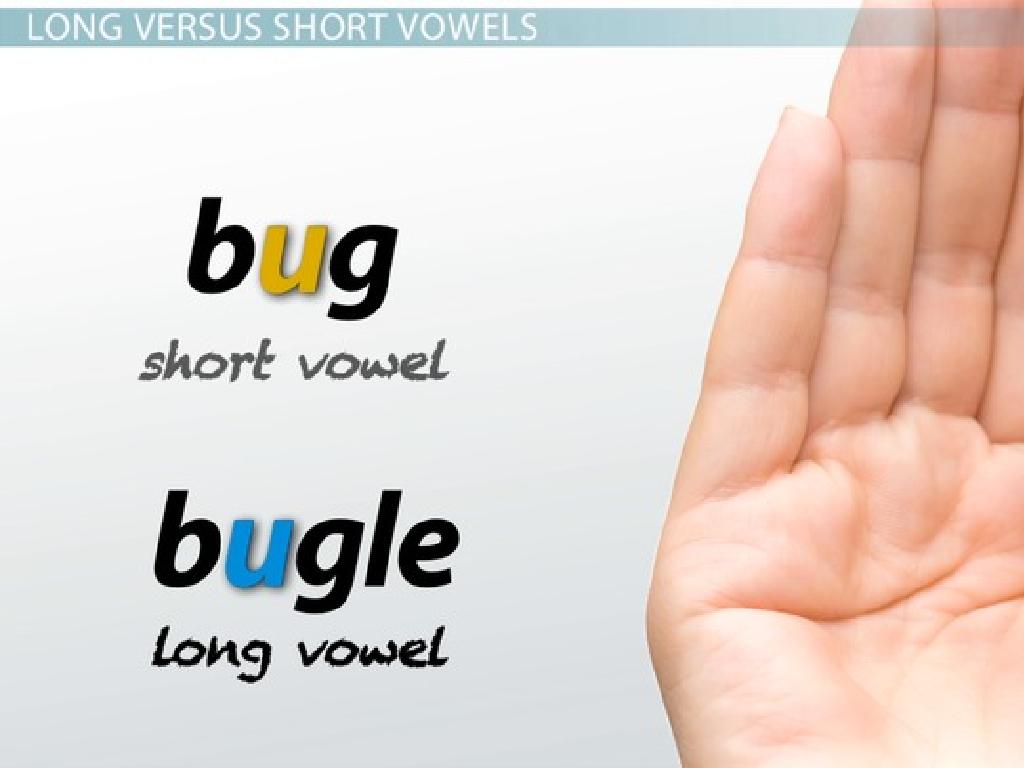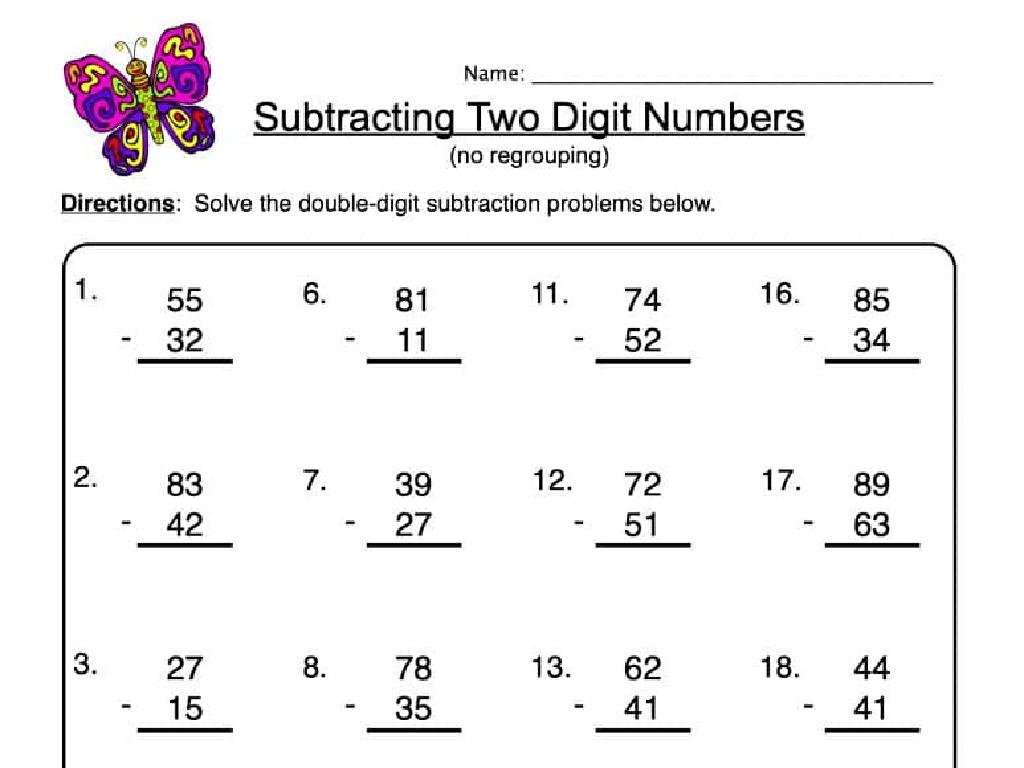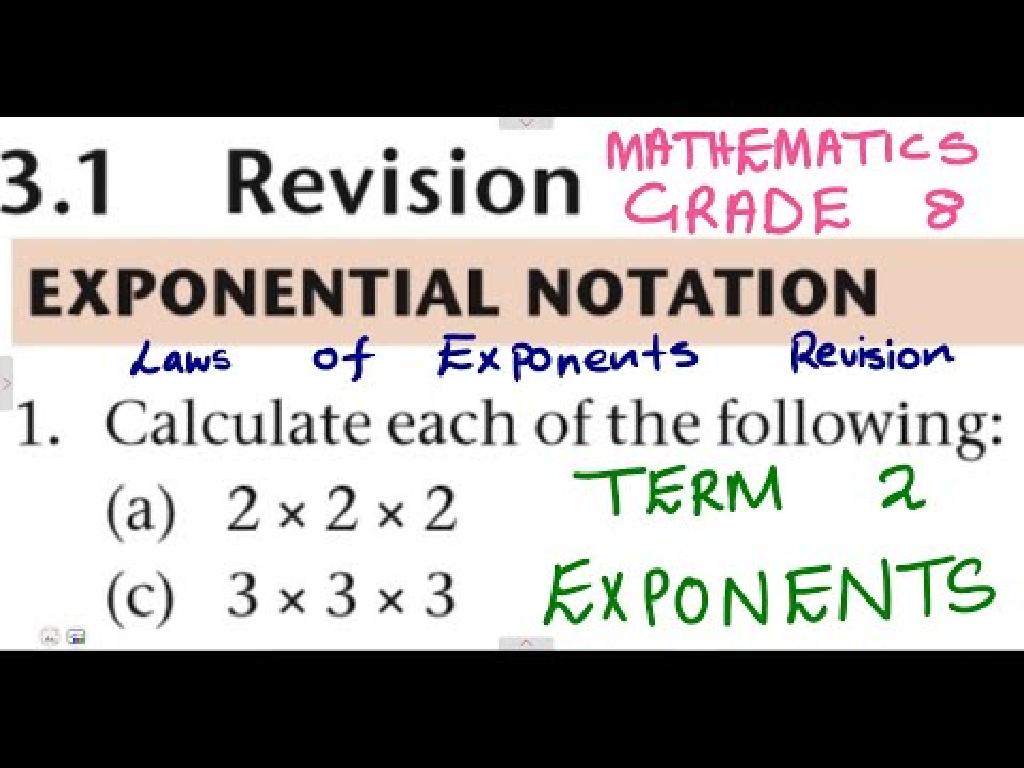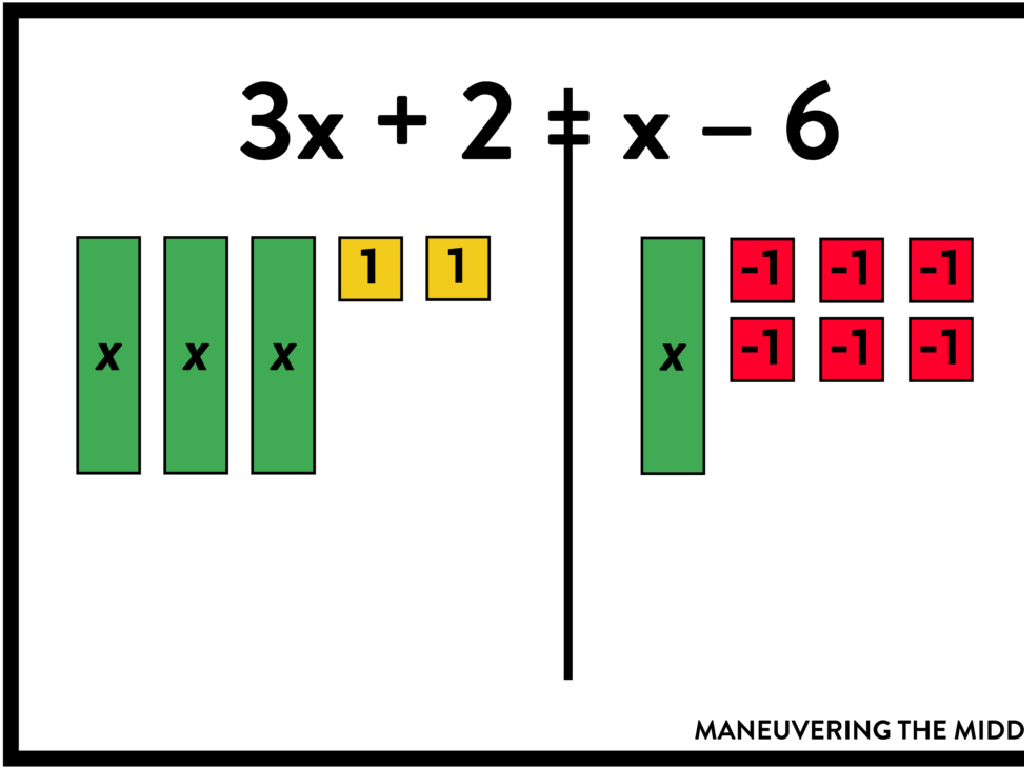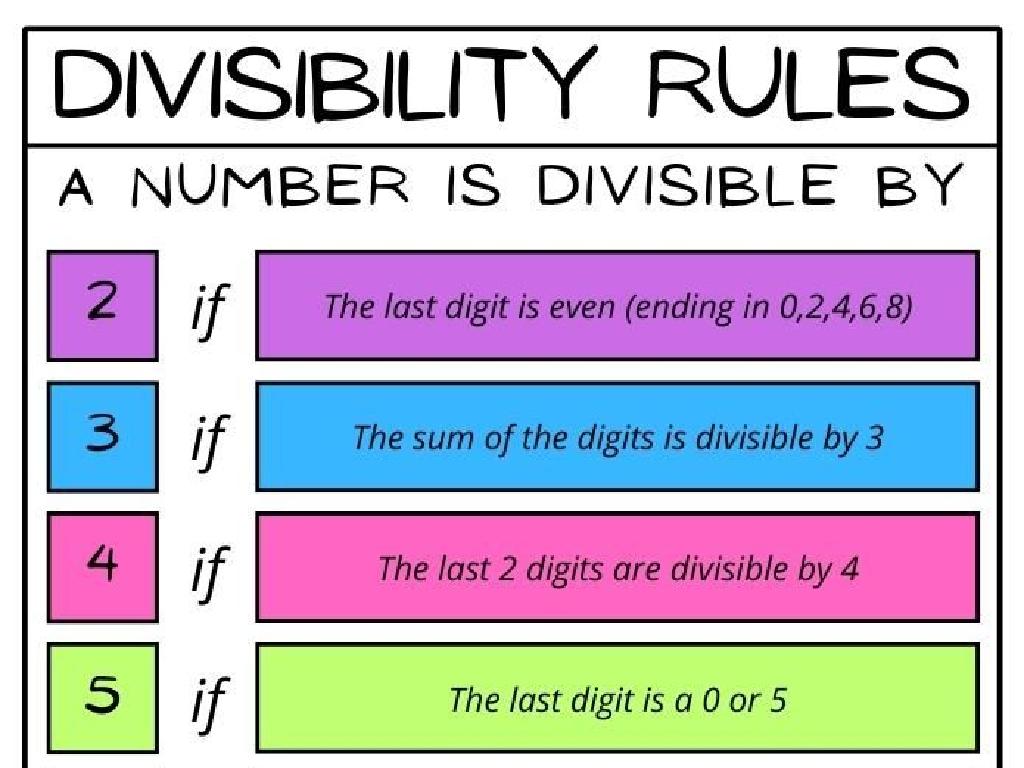Identify Verbs In The Regular Past Tense
Subject: Language arts
Grade: Fourth grade
Topic: Verb Tense
Please LOG IN to download the presentation. Access is available to registered users only.
View More Content
Exploring Past Tense Verbs
– Understanding verb tenses
– Verb tenses tell us when an action happens.
– Defining a verb
– A verb is an action word like ‘run’, ‘jump’, or ‘think’.
– Recognizing past tense verbs
– Past tense verbs often end in ‘ed’, like ‘jumped’ or ‘laughed’.
– Regular past tense formation
– To form regular past tense, we usually add ‘ed’ to the verb.
|
This slide introduces the concept of verb tenses, focusing on the past tense for regular verbs. Begin by explaining that verb tenses indicate the timing of an action. Clarify what a verb is by providing familiar examples. Emphasize that past tense verbs are used to describe actions that have already happened. Teach the rule for converting present tense verbs to their regular past tense form by adding ‘ed’ at the end. Use examples like ‘play’ becomes ‘played’ and ‘watch’ becomes ‘watched’. Encourage students to think of verbs they use every day and practice changing them to past tense. Prepare a list of common verbs for an interactive class activity where students convert present tense verbs to past tense.
Understanding Verbs in Past Tense
– Verbs are action words
– They show what someone or something does
– Examples: run, jump, eat, think, play
– ‘Run’ becomes ‘ran’, ‘jump’ turns into ‘jumped’
– Regular past tense adds ‘ed’ to verbs
– ‘Play’ changes to ‘played’, showing the action happened in the past
|
This slide introduces the concept of verbs to the students, emphasizing their role as action words in sentences. It’s crucial to provide clear examples that the students can easily relate to and understand. After explaining what verbs are, transition to the concept of regular past tense, which typically involves adding ‘ed’ to the base form of the verb. Use common verbs that the students are familiar with to illustrate this point. Encourage the students to think of actions they did yesterday or earlier in the week and to try converting those verbs into the past tense as a class activity.
Understanding Verb Tenses
– Verbs indicate action timing
– Past tense verbs: completed actions
– Words like ‘walked’, ‘jumped’, and ‘laughed’ tell us the action is finished.
– Present tense verbs: current actions
– Words like ‘walk’, ‘jump’, and ‘laugh’ are happening right now.
– Future tense verbs: upcoming actions
– Words like ‘will walk’, ‘will jump’, and ‘will laugh’ tell us what will happen.
|
This slide introduces students to the concept of verb tenses, which are crucial for indicating when an action takes place. Emphasize that past tense verbs are used for actions that are already done, present tense verbs for actions currently in progress, and future tense verbs for actions that are yet to occur. Provide examples for each tense and encourage students to come up with their own examples. Use relatable activities to make it easier for them to grasp the concept. In the next class, practice identifying and using different verb tenses through written and spoken exercises.
Regular Past Tense Verbs
– Regular verbs end with ‘ed’
– Examples: walk -> walked
– jump -> jumped, paint -> painted
– ‘ed’ indicates past action
– It’s a time clue for past events
– Practice: find past tense verbs
– Look in your book for verbs ending in ‘ed’
|
This slide introduces students to the concept of regular past tense verbs in English. Emphasize that most regular verbs in the past tense end with ‘ed’. Provide clear examples by showing the base form and then the past tense form. Explain that the addition of ‘ed’ to a verb signifies that the action has already happened. Encourage students to practice by finding verbs in the past tense in their reading book or by thinking of verbs they use every day and converting them to the past tense. This will help solidify their understanding of regular past tense verb formation.
Identifying Regular Past Tense Verbs
– Look for ‘ed’ at the end of verbs
– Verbs like ‘jumped’ and ‘played’ show action that has already happened.
– ‘ed’ doesn’t always mean past tense
– Words like ‘wanted’ can describe a thing, not just an action in the past.
– Use context to find past tense verbs
– Read the sentence to see if the action is finished.
– Practice with sentences
– Find verbs in past tense in your favorite book.
|
This slide is aimed at helping students recognize regular past tense verbs by looking for the ‘ed’ ending. However, it’s crucial to explain that not all words ending in ‘ed’ signify past tense verbs; some can be adjectives. Context is key in determining the use of ‘ed’ in a sentence. Provide examples and non-examples to illustrate this point. Encourage students to practice by reading sentences and identifying past tense verbs. As an activity, they could look for past tense verbs in sentences from books they enjoy or create their own sentences using regular past tense verbs.
Let’s Practice: Spotting Past Tense Verbs
– Find past tense verbs in sentences
– Look for actions that were completed in the past
– Underline the verbs you discover
– Use a pencil to underline each past tense verb
– Share your findings with the class
– Discuss the verbs you found and how you identified them
|
This slide is for a classroom activity focused on identifying regular past tense verbs. Students will practice by reading sentences and finding verbs that indicate actions completed in the past. They should underline these verbs to visually mark them. After completing the task, students will engage with their peers by sharing and discussing their answers. This activity will help reinforce their understanding of past tense verbs and how they are used in sentences. As a teacher, walk around the classroom to assist students who may struggle and provide examples if necessary. Encourage students to explain why they think a verb is in the past tense to develop their critical thinking skills.
Past Tense Verbs: Exceptions to the Rule
– Not all verbs use ‘ed’ for past tense
– ‘Irregular verbs’ break the rule
– Example: ‘go’ becomes ‘went’
– Other examples: ‘run’ -> ‘ran’, ‘eat’ -> ‘ate’
– Example: ‘have’ becomes ‘had’
– More irregulars: ‘is’ -> ‘was’, ‘are’ -> ‘were’
|
This slide introduces students to irregular verbs, which do not follow the standard ‘ed’ ending rule for the past tense. Emphasize that while many verbs in English become past tense by adding ‘ed’, there are many common verbs that change in different ways. Provide examples of irregular verbs and their past tense forms, and explain that these must be memorized as there is no easy rule to follow. Encourage students to think of other irregular verbs they know and use them in sentences to reinforce their understanding. Plan an activity where students can match present tense verbs to their irregular past tense forms to practice.
Class Activity: Verb Tense Time Travel
– Write a time travel story
– Use regular past tense verbs
– Verbs that ended with ‘ed’ like ‘walked’, ‘jumped’
– Imagine traveling back in time
– Share your story with a classmate
– Take turns reading to each other
|
This activity is designed to help students practice using regular past tense verbs in a fun and creative context. Encourage them to think about a time period they would like to visit and what they would do there. Remind them to use verbs that end in ‘ed’ to show that the actions happened in the past. After writing their stories, students should pair up and read their stories aloud to each other. This will help them to practice their pronunciation of past tense verbs and to learn from hearing their peers’ stories. Possible variations of the activity could include drawing a scene from their story, creating a comic strip, or acting out a part of their time travel adventure.
Review: Regular Past Tense Verbs
– Recap on past tense verbs
– Past tense verbs tell us about actions that are completed.
– Significance of verb tenses
– Knowing verb tenses helps us understand when actions happen.
– Homework: Verb hunt in a book
– Find 5 verbs that ended in -ed from your reading.
|
As we wrap up today’s lesson, let’s review what we’ve learned about regular past tense verbs, which typically end in -ed and indicate actions that have already happened. Understanding verb tenses is crucial for students as it helps them to correctly convey the timing of actions when speaking and writing. For homework, students are tasked to find five regular past tense verbs in their favorite book, which will reinforce their learning and help them recognize verb tenses in literature. Encourage them to look for context clues that indicate the action is in the past and to write sentences using those verbs to share in the next class.

